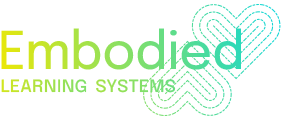Cranial Nerve Sequencing Intensive
10:00 am - 2:00 pm EDT
June 1 & 2, 2024
- calm overthinking with body awareness
- access receptivity insteady of overwhelm
- take an embodied stance for your convictions
What is cranial nerve sequencing? I guide you step by step through an experience of all 12 cranial nerves using the Alexander Technique principles. You will learn the basic anatomy and function of each nerve, and learn practices you can use to explore each one on your own.
Learn simple practices can be shared in your groups and teams once you have mastered them yourself. The workshop will be recorded to support your continued practice.
Our perceptual and motor systems can get "glued" together in patterns that aren't helpful. Through exploring each cranial nerve, you learn how to let that nerve do it's work without over activating other nerves.
We don't have to think so hard that we forget our bodies. We don't need to smell with our neck muscles, hear with our jaw muscles, or see with our frown muscles.
Cranial Nerve Sequencing activates a free and delicate articulation of head and spine, resetting overall coordination throughout your whole body so you can be more open and available for what is happening around you.
The practice provides access to the free neck, balanced head, resonant voice, and dynamic postural tone that the Alexander Technique is famous for.
Access deep mobility, coordination, and balance:
We will explore cranial nerves 1 - 8 on the first day; 9 - 12 on the second day with time for reflection and review. There is ample time to address your personal needs, concerns, and questions.
We map one cranial nerve at a time, exploring its function, and discovering if it's over or under activated. Either state can be the hidden cause of stress and strain. Sometimes one nerve is damaged or in distress, but other neighboring nerves are perfectly able to help you adapt to this reality more effectively.
IF YOU:
- Want to be a better listener without losing your power
- Access calm in difficult situations
- Struggle to stay in touch with your own body when with others
- Thrive in a non-judgemental, structured learning environment
- Suffer from stiffness, visual strain or headaches
- Suffer from daily back ache or pain
- Experience jaw tension that you can't release
- Have difficulty with voice, speech, or swallowing
- Depend on outside influences to calm your nervous system (like social media or TV)
- Want an ally on your healing journey that will see you as whole person instead of treating an isolated symptom or issue
HOW CAN I FIND OUT MORE?
15
minute
consultation
Single Cranial Nerve Sequencing session
- 55 minutes -
Book a spot in the intensive June 1 & 2, 10 am - 2 pm EDT
Let's make sure I understand your goals and can help you achieve them.
Let’s try working together and see if it’s a good fit.
New Yorkers: Wednesdays 1pm - 8pm. Balance Arts, 151 West 30 Street, Manhattan
We'll cover anatomy, physiology, and practices for all 12 cranial nerves. Each day is 4 hours, with a 1 hour lunch break.
Testimonials

Sign up for my weekly newsletter and start connecting to your own body intelligence now with a steady diet of educational content that is easy to understand and supported by concrete practices that you can do on your own.
“Stress is not the problem.
Stress is not bad for you; being stuck is bad for you.”


